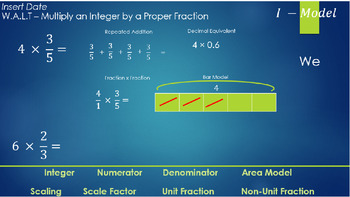Multiplying Fractions - 3 Lesson Bundle Pack - Year 5,6,7 - Grade 4,5,6
- Zip
Description
Full Multiple Lesson Bundle Pack
Multiplying Fractions Lessons Bundle - UKS2 / LKS3 - 4th, 5th and 6th Grade
**TeksTeaching04 - Multiplying Fractions - 3 Lesson Bundle Pack**
Within this bundle is Three Maths lessons focusing on Multiplying Fractions.
These lessons have been designed for a Year 6 classroom in the UK, but can easily be applied to a Year 5 or year 7 classroom, as well as being suitable for grades 4, 5 and 6 in the US.
Lessons are structured in the following way;
Starter / Do Now / Introductory Task
Input / New Learning / Modelling
Teacher led practice / I, We, You / AFL
Independent Practice
Application of New learning
Challenge / Extension
The planning within these lessons uses multiple visual aids, resources from a variety of mathematics teaching practice and applies a ‘Mastery’ approach to learning. These lessons also investigate the relationship between the properties of a Fractions and how our common knowledge of Multiplication can be used within Fractions.
Within this lesson pack bundle is three lessons that meet the following objectives:
Multiplying Fractions by Integers
Recognising Various Methods of Multiplying Fractions
Calculating Perimeter
Solve Problems involving Fraction Multiplication
Lessons contain full learning documents, resources and worksheets, meaning there is very little for you to do other than teach the lessons!
Thank you for your interest in this product, check out the whole store (TeksTeaching04) for our full list of resources!




